对摩托罗拉 Razr Ultra 的评价
如果你想要一款翻盖智能手机,那么你就必须做出妥协--这句话已经说了很久。而新款 Razr Ultra(又称 Razr 60 Ultra)还未能完全终结这一时代。值得庆幸的是,它配备了更大的电池,续航时间可与其他顶级设备媲美,同时还配备了成熟的高端处理器。
另一方面,它的摄像头在变焦能力和质量方面跟不上时代的步伐,用户有时不得不忍受高热量的浪费,甚至可能导致手机过热,它只配备了 USB-2.0 连接,而且更新承诺平平,这对于这个价位的手机来说确实是个问题。
与此同时,Razr Ultra 是一款超级时尚的智能手机,表面材质出色,防摔防尘性能更佳。它的充电速度更快,内存也增大了。不过,如果你购买的是今年的机型,则需要多支付 300 美元。
总而言之,Razr Ultra 与前代产品相比有了很大改进,进一步缩小了与传统高端手机的差距。尽管如此,你仍然必须接受它的一些缺点,以换取其炫酷的概念。
Pros
Cons
价格和供应情况
摩托罗拉 Razr Ultra 可在摩托罗拉在线商店订购,价格为 1299.99 美元。.
您也可以从亚马逊等主要在线零售商处购买。
规格
外壳和连接件 - 不同材料
从外观上看,摩托罗拉 Razr Ultra 与其前身 Razr+ (2024)在外观上,摩托罗拉 Razr Ultra 与前代产品 Razr+(2024)并无太大区别。不过,Razr Ultra 的重量增加了 10 克,这可能是由于它配备了更大功率的电池。
Razr Ultra 有四种不同材质的 Pantone 颜色可供选择。在名为 "Scarab "的型号上,其背面由 Alacantra 覆盖,而 "Mountain Trail "则使用了一种木材。Cabaret 是缎面处理的鲜艳粉色,而 Rio Red 则是以人造皮革为特色的棕酒红。
它的铰链可以单手轻松打开,同时还能牢牢固定住手机的各个位置。
手机外部显示屏由康宁大猩猩陶瓷玻璃保护,据说能提供更好的防摔保护。它的防水和防尘等级仅为 IP48,因此并非完全防尘。
它继续配备 512 GB 存储空间,而内存则增至 16 GB。令人讨厌的是,该设备仍然只有 USB 2.0 接口。
» Notebookcheck多媒体笔记本电脑Top 10排名
» Notebookcheck游戏笔记本电脑Top 10排名
» Notebookcheck低价办公/商务笔记本电脑Top 10排名
» Notebookcheck高端办公/商务笔记本电脑Top 10排名
» Notebookcheck工作站笔记本电脑Top 10排名
» Notebookcheck亚笔记本电脑Top 10排名
» Notebookcheck超级本产品Top 10排名
» Notebookcheck变形本产品Top 10排名
» Notebookcheck平板电脑Top 10排名
» Notebookcheck智能手机Top 10排名
» Notebookcheck评测过最出色的笔记本电脑屏幕
» Notebookcheck售价500欧元以下笔记本电脑Top 10排名
» Notebookcheck售价300欧元以下笔记本电脑Top 10排名
通信和操作 - 带有 WiFi 功能的世界电话 7
WiFi 7 再次登场,这一次,摩托罗拉提高了速度,在接收方向的速度远远超过了 1,700 MBit/s--尽管我们目前还无法使用华硕 AXE11000 参考路由器测试其最快模式。
用户可以使用 SIM 卡和 eSIM 卡,这意味着支持双 SIM 卡操作。Razr Ultra 是一款支持多种 4G 和 5G 频率的全球通用手机。
内部和外部触摸屏的操作都非常可靠,对输入的响应速度也超快。
指纹传感器集成在待机键的侧面,因此在手机关闭或打开时都可以使用。保存指纹后,它能立即解锁手机,而且识别率非常高。您还可以使用面部识别技术解锁设备,该技术在手机两侧都能快速、轻松地进行识别。
| Networking | |
| Motorola Razr 60 Ultra | |
| iperf3 transmit AXE11000 6GHz | |
| iperf3 receive AXE11000 6GHz | |
| Motorola Razr 50 Ultra | |
| iperf3 transmit AXE11000 6GHz | |
| iperf3 receive AXE11000 6GHz | |
| Xiaomi Mix Flip | |
| iperf3 transmit AXE11000 | |
| iperf3 receive AXE11000 | |
| Samsung Galaxy Z Flip6 5G | |
| iperf3 transmit AXE11000 | |
| iperf3 receive AXE11000 | |
| iperf3 transmit AXE11000 6GHz | |
| iperf3 receive AXE11000 6GHz | |
| Nubia Flip 5G | |
| iperf3 transmit AXE11000 | |
| iperf3 receive AXE11000 | |
| iperf3 transmit AXE11000 6GHz | |
| iperf3 receive AXE11000 6GHz | |
| Average Wi-Fi 7 | |
| iperf3 transmit AXE11000 | |
| iperf3 receive AXE11000 | |
| iperf3 transmit AXE11000 6GHz | |
| iperf3 receive AXE11000 6GHz | |
| Average of class Smartphone | |
| iperf3 transmit AXE11000 | |
| iperf3 receive AXE11000 | |
| iperf3 transmit AXE11000 6GHz | |
| iperf3 receive AXE11000 6GHz | |
软件和可持续性 - 仅需 4 年更新
这款手机的软件基于Android 15。摩托罗拉几乎没有做任何改动,而是将大量附加功能外包给自己的应用程序。
在 2029 年之前,这款手机将每两个月接受一次安全更新,因此将持续近 4 年。对于一款如此昂贵的手机来说,这样的更新承诺实在太一般了。
包装采用大豆油墨印刷,不使用塑料。
相机 - 不算高端
摩托罗拉在 Razr Ultra 上安装了三个 5000 万像素的摄像头。这一概念的优势在于,您还可以使用主摄像头自拍,或使用广角镜头拍摄一大群朋友。外置屏幕意味着你可以随时看到照片的效果。此外,由于采用了折叠装置,您可以安全地将它支撑起来,而无需三脚架。
该设备的主摄像头拍摄的照片色彩艳丽、清晰锐利,细节丰富。不过,虚化效果看起来有些做作。我们注意到周围环境照片的某些区域出现了奇怪的模糊,例如教堂的塔楼。在极暗的环境中,它的亮度和动态表现都非常出色,较小细节的清晰度也同样令人印象深刻。
用户可以录制最高 30 帧/秒的 8K 视频或 60 帧/秒的 4K 视频。我们非常喜欢所拍摄视频的清晰度和自动对焦的速度。
其广角镜头拍摄的照片清晰细腻。
使用内置摄像头拍摄的自拍效果也不错,我们还喜欢它在明亮背景下进行的 HDR 计算。
Image comparison
Choose a scene and navigate within the first image. One click changes the position on touchscreens. One click on the zoomed-in image opens the original in a new window. The first image shows the scaled photograph of the test device.
Main camera plantMain camera surroundingsMain camera low lightWide-angle camera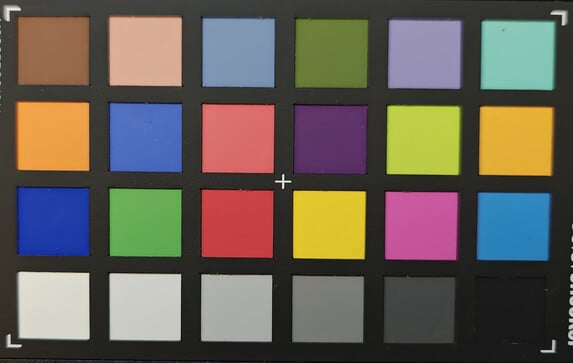

显示屏 - 更大、更亮
这款智能手机的内部显示屏略有增大,达到了 7 英寸,因为它现在采用了更纤薄的边框。与前代产品相比,它拥有更高的分辨率和亮度。
遗憾的是,由于采用了 AMOLED 技术,因此在低亮度下无法避免 PWM 闪烁。不过,我们测得的频率高达 707 Hz,因此敏感用户仍然可以使用该屏幕。
只要选择 "自然 "模式,显示屏就能非常准确地再现色彩。
外屏与 Razr+ (2024)。
| |||||||||||||||||||||||||
Brightness Distribution: 93 %
Center on Battery: 1379 cd/m²
Contrast: ∞:1 (Black: 0 cd/m²)
ΔE ColorChecker Calman: 1.05 | ∀{0.5-29.43 Ø4.78}
ΔE Greyscale Calman: 1.4 | ∀{0.09-98 Ø5}
99.8% sRGB (Calman 2D)
Gamma: 2.124
CCT: 6362 K
| Motorola Razr 60 Ultra AMOLED, 2992x1224, 7" | Motorola Razr 50 Ultra P-OLED, 2640x1080, 6.9" | Xiaomi Mix Flip AMOLED, 2912x1224, 6.9" | Samsung Galaxy Z Flip6 5G Dynamic AMOLED 2X, 2640x1080, 6.7" | Nubia Flip 5G OLED, 2790x1188, 6.9" | |
|---|---|---|---|---|---|
| Screen | -8% | -90% | -65% | 7% | |
| Brightness middle (cd/m²) | 1379 | 1099 -20% | 949 -31% | 1210 -12% | 1164 -16% |
| Brightness (cd/m²) | 1393 | 1087 -22% | 949 -32% | 1221 -12% | 1172 -16% |
| Brightness Distribution (%) | 93 | 95 2% | 98 5% | 98 5% | 97 4% |
| Black Level * (cd/m²) | |||||
| Colorchecker dE 2000 * | 1.05 | 1.04 1% | 2.1 -100% | 3.1 -195% | 0.7 33% |
| Colorchecker dE 2000 max. * | 1.79 | 2.36 -32% | 5.6 -213% | 4.2 -135% | 1.5 16% |
| Greyscale dE 2000 * | 1.4 | 1.1 21% | 3.8 -171% | 2 -43% | 1.1 21% |
| Gamma | 2.124 104% | 2.199 100% | 2.25 98% | 2.05 107% | 2.2 100% |
| CCT | 6362 102% | 6418 101% | 6826 95% | 6666 98% | 6482 100% |
* ... smaller is better
Screen Flickering / PWM (Pulse-Width Modulation)
| Screen flickering / PWM detected | 707 Hz Amplitude: 44 % | ||
The display backlight flickers at 707 Hz (worst case, e.g., utilizing PWM) . The frequency of 707 Hz is quite high, so most users sensitive to PWM should not notice any flickering. In comparison: 53 % of all tested devices do not use PWM to dim the display. If PWM was detected, an average of 8142 (minimum: 5 - maximum: 343500) Hz was measured. | |||
固定缩放级别和不同亮度设置下的测量系列(最低亮度下的振幅曲线看起来很平,但这是缩放造成的。信息框显示的是最小亮度下的振幅放大图)。
Display Response Times
| ↔ Response Time Black to White | ||
|---|---|---|
| 2 ms ... rise ↗ and fall ↘ combined | ↗ 0.7 ms rise | |
| ↘ 1.3 ms fall | ||
| The screen shows very fast response rates in our tests and should be very well suited for fast-paced gaming. In comparison, all tested devices range from 0.1 (minimum) to 240 (maximum) ms. » 9 % of all devices are better. This means that the measured response time is better than the average of all tested devices (20.2 ms). | ||
| ↔ Response Time 50% Grey to 80% Grey | ||
| 2.4 ms ... rise ↗ and fall ↘ combined | ↗ 0.9 ms rise | |
| ↘ 1.5 ms fall | ||
| The screen shows very fast response rates in our tests and should be very well suited for fast-paced gaming. In comparison, all tested devices range from 0.165 (minimum) to 636 (maximum) ms. » 10 % of all devices are better. This means that the measured response time is better than the average of all tested devices (31.7 ms). | ||
性能、排放和电池寿命 - 有时功率过大
Razr Ultra 终于获得了最大功率的 骁龙8精英版高通公司的骁龙 8 精英版,而其前代产品只能使用略微瘦身的 骁龙 8s Gen 3.因此,Razr Ultra 不再落后于三星的Galaxy Z Flip,目前在所有翻盖手机中性能最好。
尽管如此,这也是有代价的:它的超薄外壳发热量很大;我们在测试过程中注意到温度超过 60°C。有时,手机甚至会过热,导致我们的基准测试时间缩短。
由听筒提供支持的扬声器音效相当不错,甚至还具有深沉的中音。您可以使用 USB-C 或蓝牙连接外部音频设备。蓝牙支持多种编解码器,因此可以非常安全地连接设备。
Razr Ultra 电池容量高达 4,700 毫安时,几乎比其他任何翻盖手机的续航时间都要长:您可以在不使用充电器的情况下上网长达 15:22 小时。这应该足够正常使用两天。此外,这款手机现在充电更快:它支持高达 68 瓦的有线充电和 30 瓦的无线充电。
| Motorola Razr 60 Ultra | Motorola Razr 50 Ultra | Xiaomi Mix Flip | Samsung Galaxy Z Flip6 5G | Nubia Flip 5G | Average 512 GB UFS 4.0 Flash | Average of class Smartphone | |
|---|---|---|---|---|---|---|---|
| AndroBench 3-5 | 15% | 25% | -3% | -45% | 13% | -22% | |
| Sequential Read 256KB (MB/s) | 3504.7 | 4012 14% | 4063.4 16% | 3930.68 12% | 967.4 -72% | 3675 ? 5% | 2242 ? -36% |
| Sequential Write 256KB (MB/s) | 3450.9 | 3512 2% | 3332.67 -3% | 2603.84 -25% | 766.69 -78% | 3072 ? -11% | 1850 ? -46% |
| Random Read 4KB (MB/s) | 308.6 | 340 10% | 367.24 19% | 445.5 44% | 263.87 -14% | 382 ? 24% | 296 ? -4% |
| Random Write 4KB (MB/s) | 347 | 457 32% | 587.21 69% | 202.97 -42% | 295.55 -15% | 463 ? 33% | 336 ? -3% |
(-) The maximum temperature on the upper side is 60.8 °C / 141 F, compared to the average of 35.2 °C / 95 F, ranging from 21.9 to 247 °C for the class Smartphone.
(-) The bottom heats up to a maximum of 53.5 °C / 128 F, compared to the average of 34 °C / 93 F
(+) In idle usage, the average temperature for the upper side is 25.1 °C / 77 F, compared to the device average of 32.9 °C / 91 F.
3DMark Steel Nomad stress test
| 3DMark - Solar Bay Stress Test Stability | |
| Motorola Razr 60 Ultra | |
| Xiaomi Mix Flip | |
| Samsung Galaxy Z Flip6 5G | |
| Motorola Razr 50 Ultra | |
Motorola Razr 60 Ultra audio analysis
(+) | speakers can play relatively loud (83.1 dB)
Bass 100 - 315 Hz
(-) | nearly no bass - on average 17.6% lower than median
(±) | linearity of bass is average (12.6% delta to prev. frequency)
Mids 400 - 2000 Hz
(+) | balanced mids - only 4.5% away from median
(+) | mids are linear (6.7% delta to prev. frequency)
Highs 2 - 16 kHz
(±) | higher highs - on average 5% higher than median
(±) | linearity of highs is average (9.9% delta to prev. frequency)
Overall 100 - 16.000 Hz
(±) | linearity of overall sound is average (19% difference to median)
Compared to same class
» 23% of all tested devices in this class were better, 9% similar, 68% worse
» The best had a delta of 11%, average was 35%, worst was 134%
Compared to all devices tested
» 44% of all tested devices were better, 8% similar, 49% worse
» The best had a delta of 4%, average was 24%, worst was 134%
Samsung Galaxy Z Flip6 5G audio analysis
(+) | speakers can play relatively loud (90.8 dB)
Bass 100 - 315 Hz
(-) | nearly no bass - on average 24.7% lower than median
(±) | linearity of bass is average (7.5% delta to prev. frequency)
Mids 400 - 2000 Hz
(±) | reduced mids - on average 5.3% lower than median
(+) | mids are linear (5.3% delta to prev. frequency)
Highs 2 - 16 kHz
(+) | balanced highs - only 4.2% away from median
(+) | highs are linear (3.5% delta to prev. frequency)
Overall 100 - 16.000 Hz
(±) | linearity of overall sound is average (17.4% difference to median)
Compared to same class
» 12% of all tested devices in this class were better, 8% similar, 81% worse
» The best had a delta of 11%, average was 35%, worst was 134%
Compared to all devices tested
» 32% of all tested devices were better, 8% similar, 60% worse
» The best had a delta of 4%, average was 24%, worst was 134%
| Off / Standby | |
| Idle | |
| Load |
|
Key:
min: | |
| Motorola Razr 60 Ultra 4700 mAh | Motorola Razr 50 Ultra 4000 mAh | Xiaomi Mix Flip 4780 mAh | Samsung Galaxy Z Flip6 5G 4000 mAh | Average Qualcomm Snapdragon 8 Elite | Average of class Smartphone | |
|---|---|---|---|---|---|---|
| Power Consumption | -18% | 6% | 5% | -53% | -26% | |
| Idle Minimum * (Watt) | 0.6 | 0.7 -17% | 0.5 17% | 0.51 15% | 1.101 ? -84% | 0.849 ? -42% |
| Idle Average * (Watt) | 0.9 | 1.1 -22% | 0.92 -2% | 1.18 -31% | 1.672 ? -86% | 1.43 ? -59% |
| Idle Maximum * (Watt) | 1.4 | 1.5 -7% | 1.1 21% | 1.21 14% | 1.893 ? -35% | 1.615 ? -15% |
| Load Average * (Watt) | 6.2 | 8.5 -37% | 7.66 -24% | 6.23 -0% | 8.88 ? -43% | 7.08 ? -14% |
| Load Maximum * (Watt) | 11.3 | 12 -6% | 9.03 20% | 8.01 29% | 13 ? -15% | 11.2 ? 1% |
* ... smaller is better
Power consumption: Geekbench (150 cd/m²)
Power consumption: GFXbench (150 cd/m²)
| Motorola Razr 60 Ultra 4700 mAh | Motorola Razr 50 Ultra 4000 mAh | Xiaomi Mix Flip 4780 mAh | Samsung Galaxy Z Flip6 5G 4000 mAh | Nubia Flip 5G 4310 mAh | |
|---|---|---|---|---|---|
| Battery runtime | -14% | -3% | 1% | 3% | |
| Reader / Idle (h) | 29.8 | 25.4 -15% | 33.3 12% | ||
| H.264 (h) | 19.5 | 17 -13% | 19.1 -2% | ||
| WiFi v1.3 (h) | 15.4 | 12.1 -21% | 14.9 -3% | 15.5 1% | 15.9 3% |
| Load (h) | 5 | 4.6 -8% | 4.1 -18% |
Notebookcheck 总评分
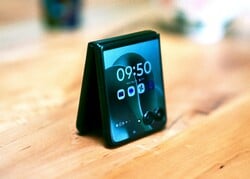
Razr Ultra 外形时尚,并在许多方面进行了改进。
如果你想拥有一款功能强大的非传统手机,那么这款手机将是你的不二之选。
Motorola Razr 60 Ultra
- 05/27/2025 v8
Florian Schmitt
可能的替代品比较
Transparency
The selection of devices to be reviewed is made by our editorial team. The test sample was provided to the author as a loan by the manufacturer or retailer for the purpose of this review. The lender had no influence on this review, nor did the manufacturer receive a copy of this review before publication. There was no obligation to publish this review. As an independent media company, Notebookcheck is not subjected to the authority of manufacturers, retailers or publishers.
This is how Notebookcheck is testing
Every year, Notebookcheck independently reviews hundreds of laptops and smartphones using standardized procedures to ensure that all results are comparable. We have continuously developed our test methods for around 20 years and set industry standards in the process. In our test labs, high-quality measuring equipment is utilized by experienced technicians and editors. These tests involve a multi-stage validation process. Our complex rating system is based on hundreds of well-founded measurements and benchmarks, which maintains objectivity. Further information on our test methods can be found here.




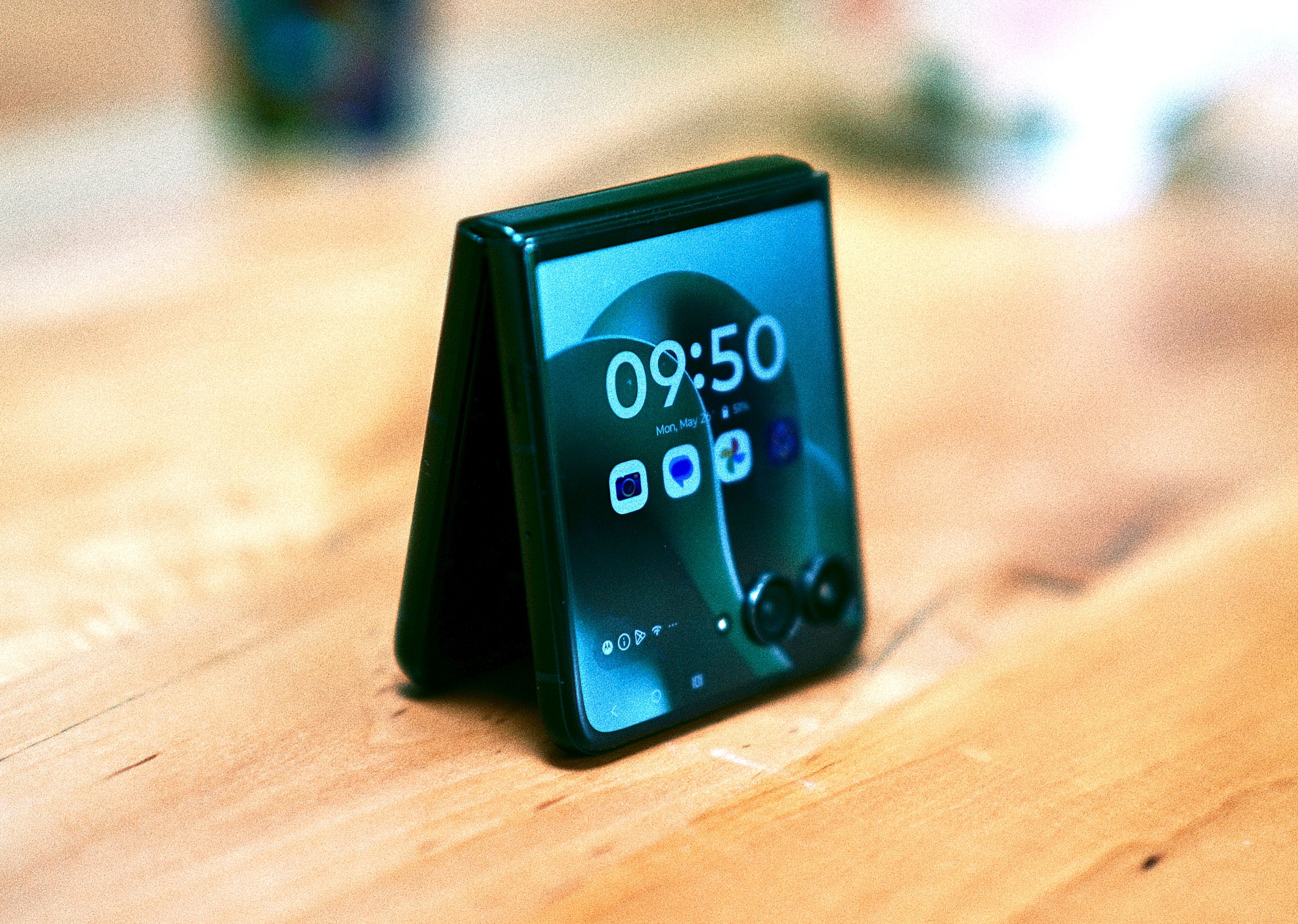

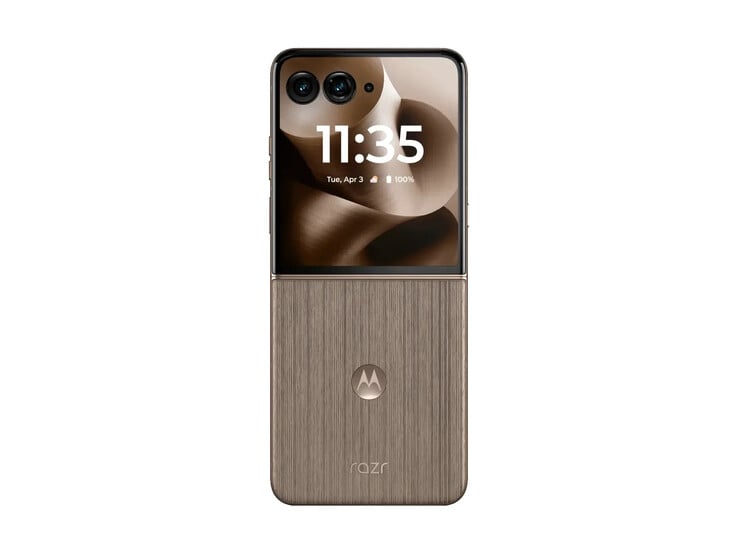






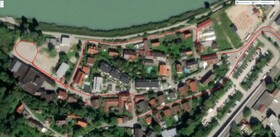

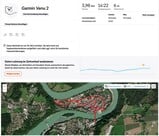
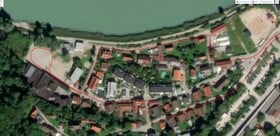







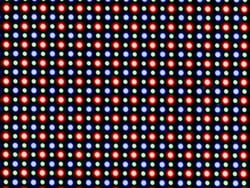
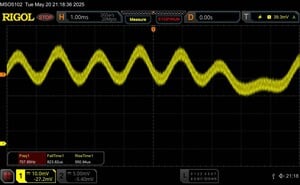
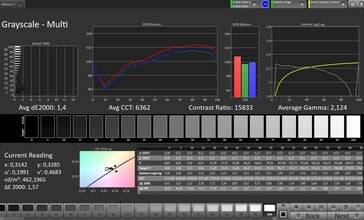
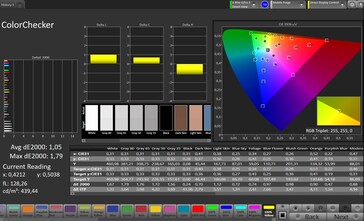
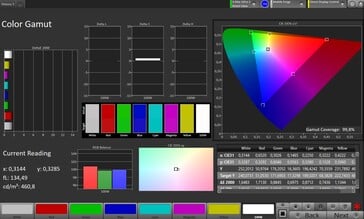
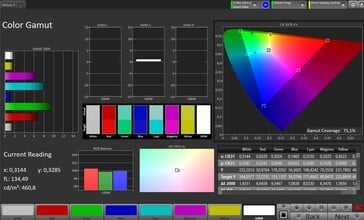
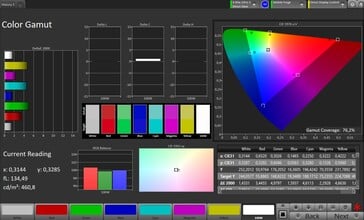
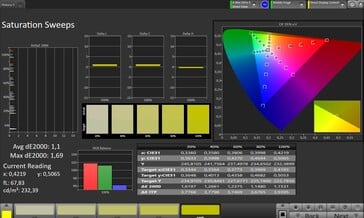
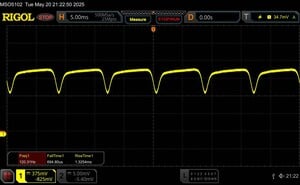

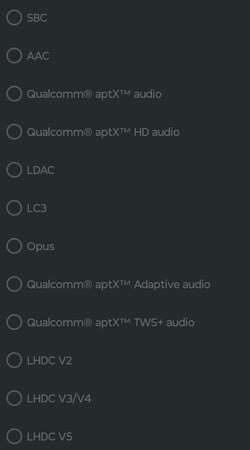
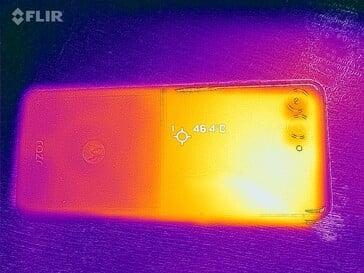

 Total Sustainability Score:
Total Sustainability Score: 
